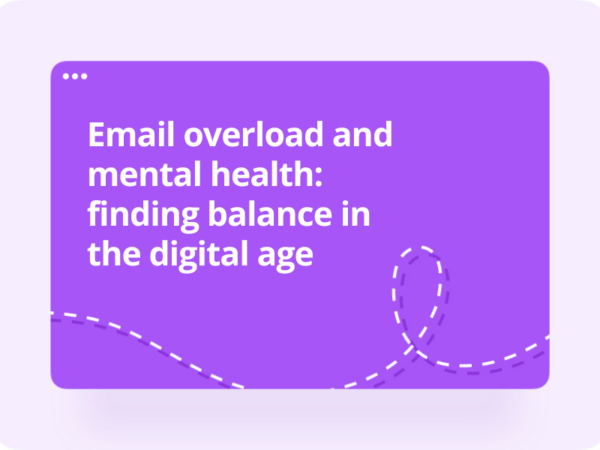Mastering Work Burnout: Recognizing, Preventing, And Overcoming Workplace Exhaustion

As a dedicated professional, you handle a wide range of responsibilities day in and day out.
Over time, these responsibilities can pile up, leading to chronic workplace stress, fatigue, and low spirits.
This build-up of stress can often give rise to a common issue known as work burnout, which can significantly impact both the quality of your work and your overall job satisfaction.
Unfortunately, the effects of work burnout don’t stop at the office door. They can spill over into your personal life, affecting your well-being and personal relationships.
But here’s the good news: There are practical solutions to combat work burnout.
By becoming familiar with the signs and symptoms of work burnout, you can catch it in its early stages.
In this blog, we’ll explore how work burnout may show up in your life and provide practical strategies to prevent it and overcome its challenges.
What is work burnout?
The World Health Organization defines workplace burnout as a condition that arises from prolonged job-related stress that has not been successfully managed.
It’s a state where the relentless demands of work can lead to a sense of disconnection from your job, making it challenging to find the enthusiasm and motivation you once had.
Experiencing job burnout isn’t just about feeling tired; it’s about feeling emotionally drained and experiencing a profound sense of negativity towards your work, which can have significant consequences for your professional and personal life.
Recognizing work burnout
There are several common symptoms of workplace burnout. Recognizing these signs can help identify burnout and prevent it from escalating.
The signs of burnout at work include:
- Persistent fatigue: Are you waking up after a full night’s sleep and still feeling tired? This lingering fatigue can be a sign of emotional exhaustion, which is commonly associated with work burnout. This energy depletion will likely make it challenging to summon the energy needed for your daily tasks.
- Reduced performance: Have you noticed a dip in your job performance? Maybe it’s taking longer to complete tasks, or you’re finding it harder to stay focused and make decisions. These could be early indicators of burnout.
- Cynicism and detachment: Work burnout can bring a negative and cynical attitude toward your job and colleagues. It might also create a feeling of detachment, where you’re emotionally distant from your work.
- Increased irritability: If you’ve been feeling unusually irritable, impatient, or quick to anger, both at work and in personal interactions, it’s worth considering that this could be linked to burnout.
- Physical symptoms: Work burnout can even affect you physically. Headaches, muscle tension, and gastrointestinal issues like stomach aches are not uncommon when dealing with burnout.
- Insomnia or sleep disturbances: Trouble falling or staying asleep due to work-related stress can be a red flag for burnout. Sleep is crucial for overall well-being, and persistent sleep disturbances can take a toll.
- Withdrawal from social life: If you’ve noticed yourself withdrawing from social activities and preferring solitude, it’s a common symptom of burnout. It’s essential to maintain connections with others for emotional support.
- Loss of enthusiasm: Lastly, if tasks and activities you once enjoyed now seem uninteresting or uninspiring, it could be a sign of burnout. Regaining enthusiasm for your work and hobbies is an essential part of recovery.
Preventing work burnout
Now that we understand what workplace burnout is let’s explore some key practices and techniques that can help you prevent work burnout from escalating in your life:
- Set clear boundaries: Make a pact with yourself to switch off from work once your work hours are over. It’s your time to unwind and recharge.
- Manage workload: Don’t hesitate to talk to your boss or supervisor if your workload feels like a mountain. They’re there to help, and together, you can find solutions.
- Take regular breaks: Give yourself little breaks during the day to recharge. You don’t need to be superhuman; a quick walk or deep breaths can make a difference.
- Prioritize self-care: Work-life balance is crucial. Remember to do things you love, like exercising, meditating, or spending time with your favorite people. Self-care is a priority, not a luxury.
- Learn to say no: You don’t have to say yes to everything. It’s okay to decline extra work when you’re already swamped.
- Time management: Get better at managing your time. This will help you get things done efficiently and reduce job stress.
- Seek support: Don’t hesitate to lean on friends, colleagues, or even professionals when things get tough. Sometimes, talking it out can be a game-changer.
- Regular check-ins: Keep tabs on your stress levels and feelings. If something doesn’t seem right, take action early.
- Goal setting: Celebrate your small victories and set realistic goals. This keeps you motivated and positive.
- Vacation and rest: Make use of your vacation time. It’s there for a reason – to give you a chance to relax and recharge.
Remember, preventing work burnout is taking small steps to look after yourself and find joy in your work.
Overcoming workplace burnout
If you believe you’re suffering from workplace burnout, you’re not alone. Many people experience burnout at one time or another in their lives.
Here are some helpful tips for managing and overcoming burnout at work:
- Acknowledge the burnout: The first step is recognizing and accepting that you are experiencing burnout. Understand that it’s a common issue and not a sign of weakness.
- Take time off: Consider taking a break from work to recharge. A vacation or extended leave can help you disconnect from stressors and regain your energy.
- Set realistic goals: Break down your workload into manageable tasks and set achievable goals. Prioritize your tasks to avoid feeling overwhelmed.
- Reconnect with passions: Rekindle your interest in activities you once enjoyed outside of work. Engaging in hobbies and interests can help restore your sense of purpose and happiness.
- Boundaries: Set clear boundaries between work and personal life. Avoid overcommitting, and make time for relaxation and social connections.
- Communicate: Talk to your supervisor or HR department about your burnout. They may offer support or resources to help you manage stress at work.
- Consider professional help: If burnout symptoms persist or worsen, consult a mental health professional for guidance and support. Therapy or counseling can be highly effective.
- Evaluate your career: Reflect on your long-term career goals and whether your current job aligns with them. Sometimes, a change in career or workplace can be necessary for sustained well-being.
How can an email management system like InboxFreedom help with work burnout?
Dealing with the constant influx of emails in your daily work can be incredibly stressful, often devouring your precious time and leaving you falling behind on more critical tasks.
This cycle of stress, overwhelm, and exhaustion that comes with email overload can feel relentless and contribute to workplace burnout.
InboxFreedom is an AI-powered email management tool that elevates personalization and efficiency to a whole new level.
With its advanced AI algorithms, InboxFreedom learns from your interactions and tailors email solutions to match your unique preferences. The system continuously evolves and improves, offering small business owners an optimized and streamlined email experience.
Ready to revolutionize your email management? Join our waitlist today and be among the first to experience the personalized and efficient world of InboxFreedom.
As a waitlist member, you’ll gain exclusive benefits, including early access to all the advanced features that make InboxFreedom a game-changer for handling emails.
Sign Up For Our
AI-Powered Inbox Waitlist



